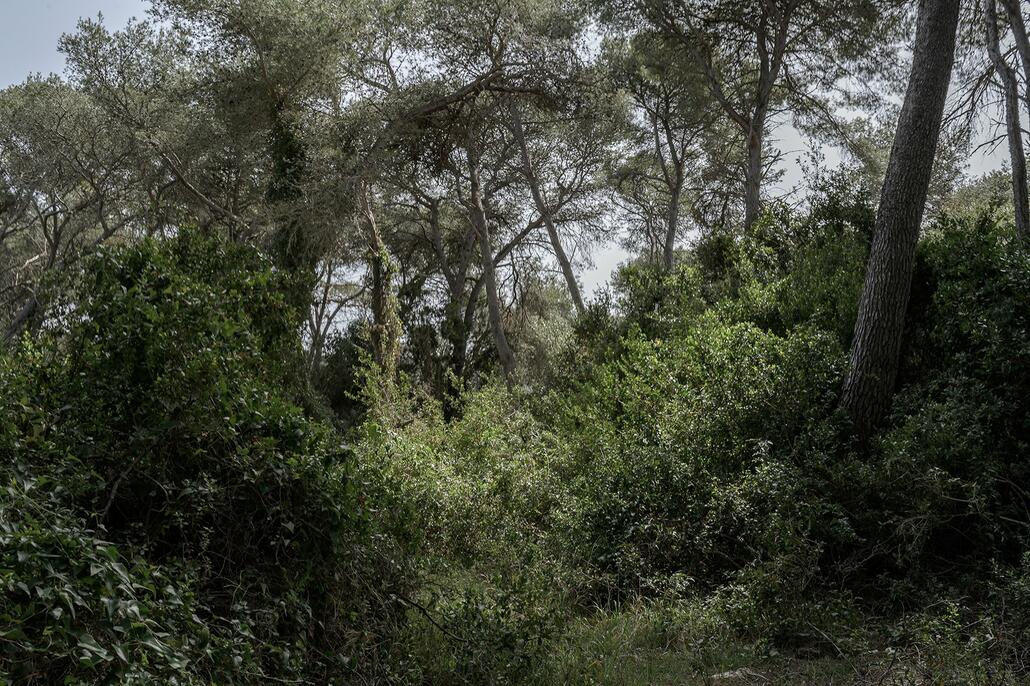woodland
Since 2012
The age of the wilderness
And suddenly the pause of the eyes, the awakening of the senses, of the imagination, of appearances. And sometimes the gaze, in its disorientation, suddenly tilts over into the irrational. The moment of happiness turns into a moment of excitement. Uncontrolled and emotional: here the eye beholds the insatiability of chlorophyll one last time. The wildness of an alleged idyll. What the viewer of these external images perceives directly are internal images. It is the diffuse discomfort of being confronted with something living, something alive. To be at the mercy of an alien, terrifying system that we can neither comprehend, control nor discipline with all our reason and knowledge. It is the creation of wilderness, of living matter – in excess. The viewer, addicted to experience, strangeness, colour, sounds and smells, would get lost in it, if he would not use any force of order or destruction.
The photographic image is a work of seconds: for nature constantly changes its appearance, its needs, its formal conditions of branches, blossoms, needles, and seeds. The forests in Germany, Europe and South America differ in behaviour and appearance. Between the semi-disciplined Europe and the wilds of South America, there is “naturally” the greatest difference: that of the staged, controlled forests in Europe and the wild, virgin jungle, to which European stereotypes are alien.
Being on the road is a state of being. Wherever our eyes are heading in this thicket: Whether we are gaining a foothold in the present or returning to the past: art is still an unknown territory to be discovered. For the tired eyes of the beholder, it is a challenge of all senses. Our eyes react to our forests with applause or fear, in the brackish water of our viewing habits with perplexity. These photographs serve as a training ground for our eyes and, in an era of increasing flood of images, as a last chance for self-knowledge.
Walter Aue


